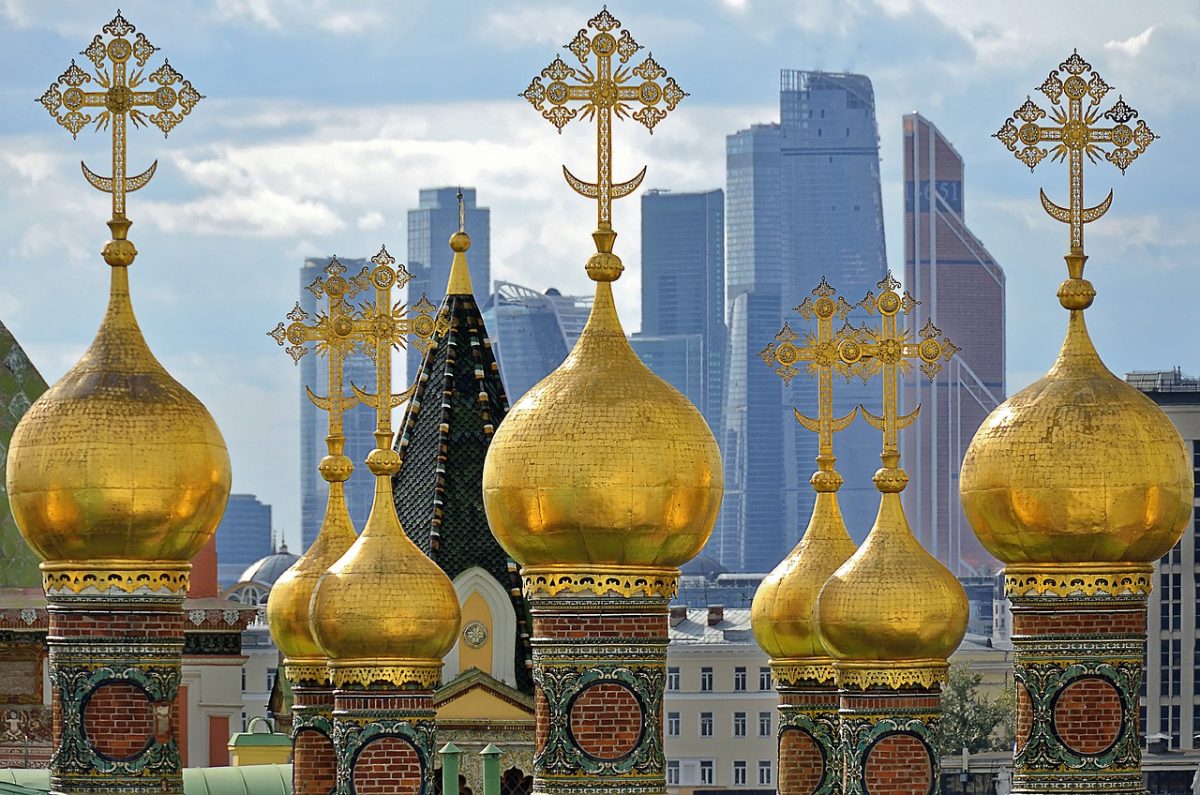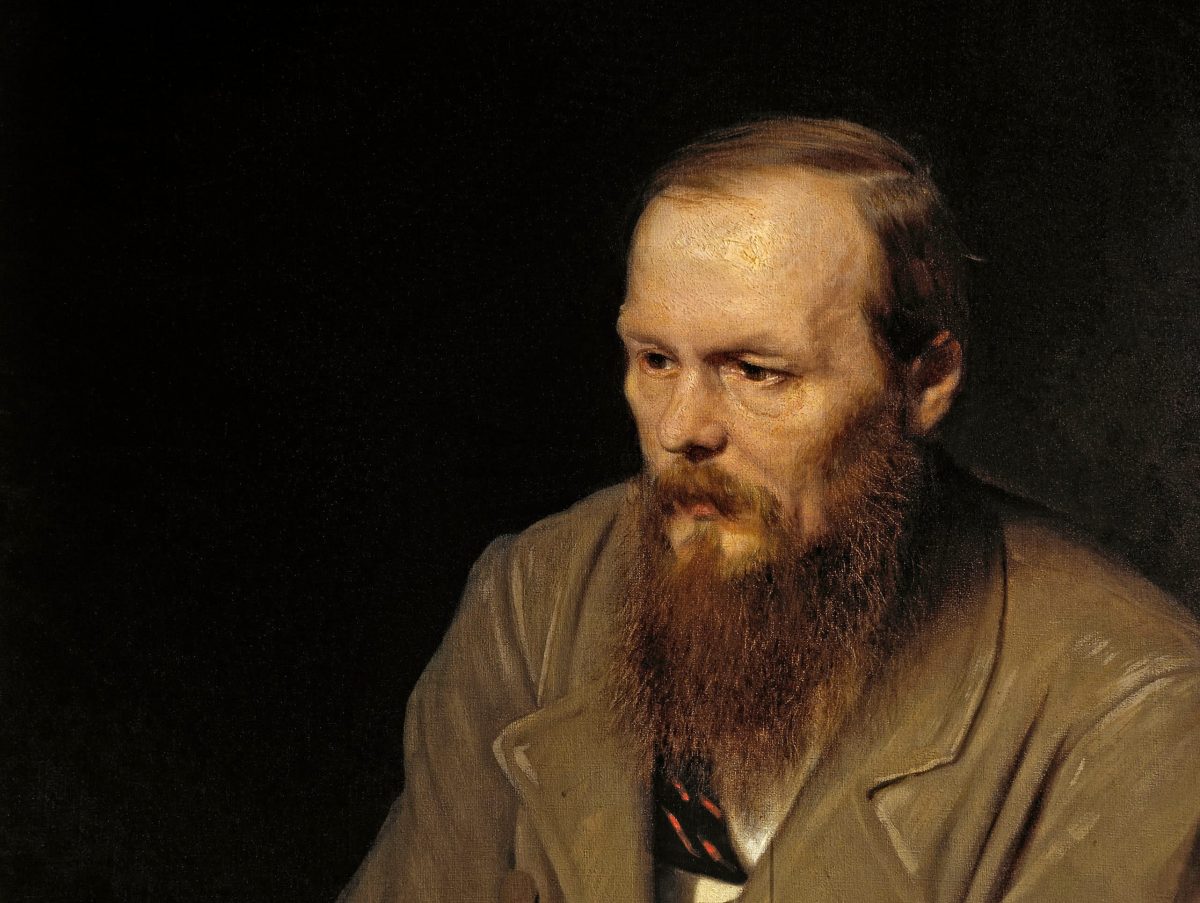There are 15 cities in Russia with more than 1 million inhabitants. Russia is a huge country and so these cities can be separated by hundreds of kilometers. The largest cities in Russia play a key role in their economy and the economy of the regions where they are located.
The history of these cities is not common from the western point of view because some of them were planned from the root to populate the regions far from Moscow. For this reason, some of them have few tourist attractions, being mainly constituted by large residential buildings and private or governmental offices. These are the 15 major cities of Russia by population.
1. Moscow (12,380,664)
The real age of Moscow is not known. There are some myths saying that the foundation of Moscow took place in ancient times. The first trustworthy chronicle which mentioned the settlement is the Ipatyev Chronicle, saying that on Saturday, April 4, 1147, the prince Yury Dolgoruky received his friends and allies headed by the prince Svyatoslav Olgovich in a small town called Moskov. In the early 13th century, Moscow became the center of principality for the first time. In the first half of the 15th century, the town gradually became more and more important. This fact was directly bound with the Tatar-Mongol yoke. The Golden Horde put the Russian principalities under its tribute. Its systematic raids on the Rus’ destroyed the land, and the princes were obligated to get permissions to rule from the Horde. At the end of the 15th century, Moscow became the capital of the largest Russian state, and, at the beginning of the 16th century – the capital of a unified Russian state. In 1712, the capital of Russia was moved to a newly built town of Saint Petersburg, but Moscow remained the place where emperors were crowned. In 1754, by Catherine’s II order, Michail Lomonosov founded the Moscow University.

Moscow is located in the center of the European part of Russia, between the rivers Oka and Volga. The climate is moderate continental: heavy frosts and extreme heat are rare. The average temperature in January – minus 7.2 degrees Celsius, in July – plus 20.4 degrees Celsius. The city has the status of a separate federal subject of the Russian Federation. It is the smallest federal subject by land area. The name of the city as well as the names of many other cities around the world, is bound with the name of the river it is standing on (the Moskva River). The river was called this way long before the settlement appeared. It is unknown who named it and what this name means. There are two main versions: Finnio-Ugric and Slavic. According to the first one, the word “Moskva” is derived from the Finno-Ugric language group which means “river-bear”. The Slavic theory points to the stem “mosk” denoting “marshy” or “moisture, liquid, marshland, dampness”.
2. Saint Petersburg (5,281,579)
St. Petersburg was founded by the first Russian Emperor Peter I in 1703. This was the date of founding the Peter and Paul fortress. The main idea was to establish the water routes from the Russian Empire to Western Europe and the rest of the world, because, at that time, the country didn’t have access to the world’s oceans. Opposite the Peter and Paul fortress, the first commercial port of Saint Petersburg was founded. From 1712 till 1918, St. Petersburg was the capital of the Russian Empire and the residence of the Russian emperors. In 1715, a Naval Academy was founded here, in 1719, “Kunstkamera” – the first public museum in Russia. In 1724, St. Petersburg Academy of Sciences was founded, in 1756 – a theater. In 1837, the first Russian railroad was opened (from Saint Petersburg to Tsarskoye Selo, the residence of the imperial family), in 1851 – from Saint Petersburg to Moscow.
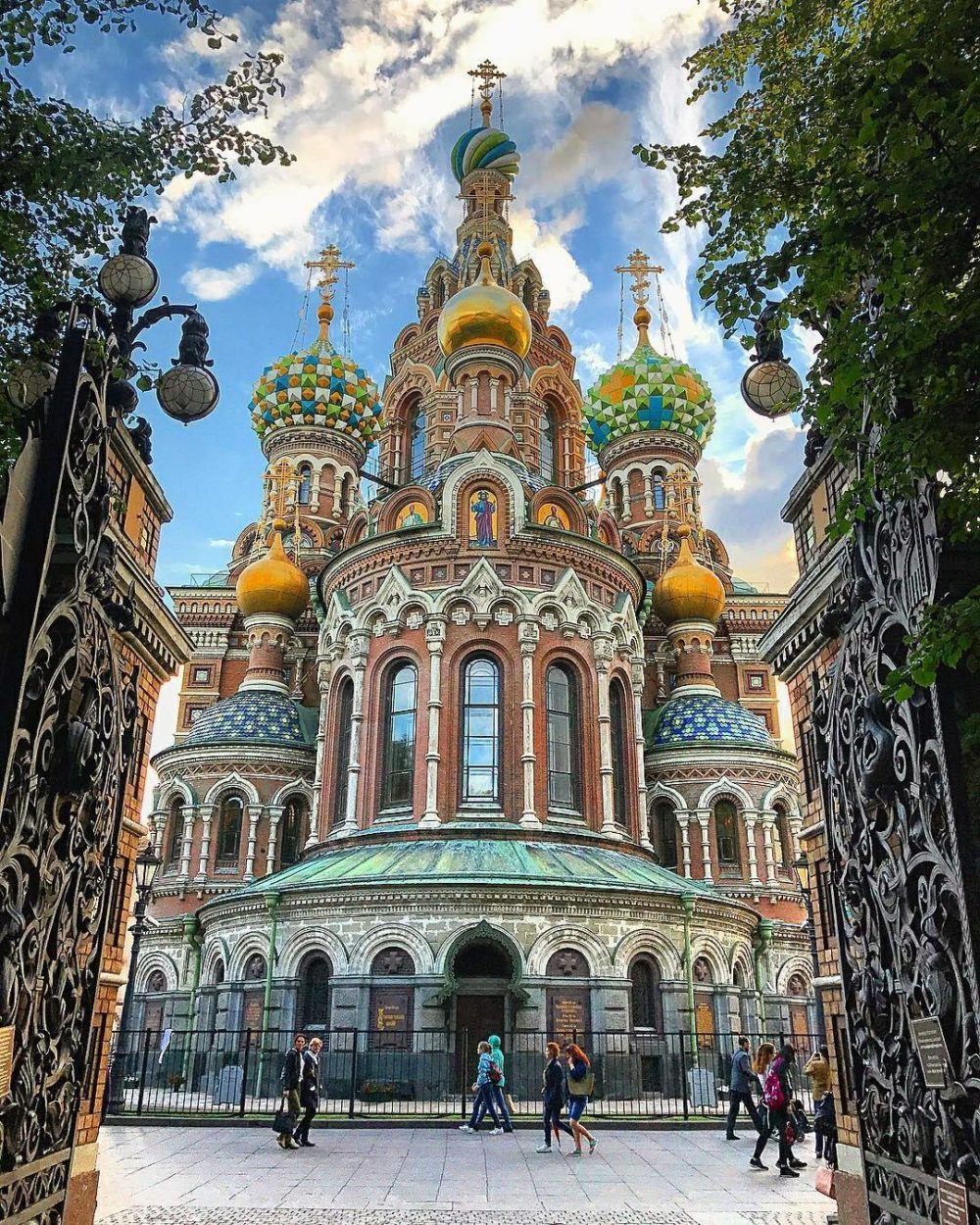
According to the results of the 1897 census, the city’s population was 1,265,000 people. Before the World War I, the population exceeded 2 million (3rd place in Europe after London and Paris). The World War I greatly influenced the fate of St. Petersburg. In August 1914, on a wave of anti-German sentiment, the city was renamed Petrograd. Today, Saint Petersburg is one of the most important economic centers of the Russian Federation. The local economy is based mainly on industry and tourism. Tourism plays an important part in the city’s economy. In 2010, Saint Petersburg was visited by about 2,300,000 foreign tourists (mostly from Finland, Germany, the US, Sweden, France). All in all, together with Russian tourists, the city was visited by 5,100,000 people in 2010. In 2010, St. Petersburg ranked 7th among the most visited and popular tourist cities in Europe (#20 in the world). The city has more than 260 large and small hotels (27 thousand rooms). Today, St. Petersburg is also one of the centers of European cruise tourism.
3. Novosibirsk (1,602,915)
Novosibirsk was founded in 1893. It was a settlement on a place where the bridge over the Ob River was planned to be built during construction of the Trans-Siberian Railway. The settlement was named Novonikolayevsk after the Russian Empire Tsar Nicholas II and St. Nicholas. In 1897, the bridge was completed that made Novonikolayevsk the most important transport hub of the region. Later, in the beginning of the 20th century, it became even more important with the construction of the Turkestan-Siberian Railway connecting Siberia with Central Asia and the Caspian Sea region. In 1897, Novonikolayevsk population was about 7,800. In 1903, the settlement became a town. By 1917, the population reached 80,000 people. Novonikolayevsk was the largest industrial center of Siberia.

Soviet power was established in December 1917. Later, in May 1918, the city was captured by the White Army together with Czechoslovak war prisoners. Soviet power was established again in 1919, when the Red Army entered the city. During the Russian Civil War, the bridge over the Ob River was destroyed and the population began to decline. In 1926, the city received its current name – Novosibirsk (meaning “a new city in Siberia”). Novosibirsk again became a large industrial center of Siberia during Stalin’s industrialization. The city received several new large facilities of heavy industry, food processing and power generation. It was the reason why Novosibirsk earned the nickname “Siberian Chicago”.
4. Ekaterinburg (1,455,514)
In spring 1723, by the emperor Peter’s I decree, construction of the largest in Russia iron producing plant began on the banks of the Iset River. Ekaterinburg was built as the capital of the mining region spread on a huge territory on both sides of the Urals, in Europe and Asia. After completion of construction, Ekaterinburg plant overcame in technological equipment all other metallurgical plants not only in the country, but in the world. Catherine II presented Ekaterinburg the status of a district town of Perm gubernia. The main road of the Russian Empire was constructed through a young town – Bolshoi (Big) Siberian Road. That’s why Ekaterinburg, together with other Permian towns, became a key-town to endless and rich Siberia, “a window overlooking Asia” like St. Petersburg was a Russian “window overlooking Europe”.

Ekaterinburg is the main administrative, cultural, scientific and educational center of the Urals. It is the official center of the Ural Federal District. The headquarters of Volga-Ural military district and the Presidium of the Urals branch of the Russian Academy of Science are located here. Besides, dozens of territorial bodies of federal power can be found in the city. That’s why Ekaterinburg received the name “The Capital of the Urals.” It’s worth saying that the geographical location of Ekaterinburg is extremely favorable and this fact influenced the development of the city. It is located in the Urals at the point where the mountains are low. This fact favored construction of the main transportation ways from Central Russia to Siberia through Ekaterinburg (Big Siberian Road, Trans-Siberian railway). As a result, Ekaterinburg became a strategically important city providing connection between European and Asian parts of the country.
5. Nizhny Novgorod (1,261,666)
From the 9th century, Slavic colonization took place in the upper Volga River, the region inhabited by Finno-Ugric peoples. By the end of the 11th century, the entire Upper Volga region, almost to the mouth of the Oka River, belonged to the ancient Rus’ state. In 1221, Russian Prince Yuri Vsevolodovich of Vladimir, founded a wooden fort at the confluence of the Volga and the Oka rivers. The settlement was named Nizhny Novgorod (“lower newtown”). In 1350, the town became the capital of an independent Suzdal-Nizhny Novgorod principality, which occupied a vast territory and competed with the Moscow principality. During this period, Nizhny Novgorod region was actively populated. In 1392 (but finally only in 1425), Suzdal-Nizhny Novgorod principality was annexed to the Moscow principality. During Ivan III and Vasily III, the town played a role of an outpost. It was a gathering place for troops during wars against the Khanate of Kazan. In 1500-1511, to replace an existing wooden fort, a stone fortress (kremlin) was built.

Nizhny Novgorod is located 417 km east of Moscow, in the center of the East European Plain, at the confluence of two major waterways of the European part of Russia – the Oka and Volga rivers. This location made the city an important shipping center of the country. The Oka divides the city into two parts. Nizhny Novgorod is the fifth most populous city in Russia. The city is one of the largest Russian centers of river tourism. The historical part of the city rich in tourist attractions and is an important tourist center. UNESCO included Nizhny Novgorod in the list of Top 100 cities in the world which are of great historical and cultural value.
6. Kazan (1,231,878)
According to the official version, Kazan was founded no less than 1000 years ago. The evidence is a Czech coin found on the territory of Kazan Kremlin and dated approximately 929-930s, as well as other items with less clear dates. Kazan was founded as an outpost on the northern borders of Volzhkaya Bulgaria. In the 13th-14th centuries, Kazan rapidly developed and became an important trade and political center of the Golden Horde. The favorable geographical location on the trade ways connecting East and West was the reason for the growth of Kazan. In 1438, Kazan was declared the capital of the Kazan Khanate. There were several conflicts with the Moscow state and as a result the town was conquered by the Russian Tsar Ivan the Terrible in 1552.
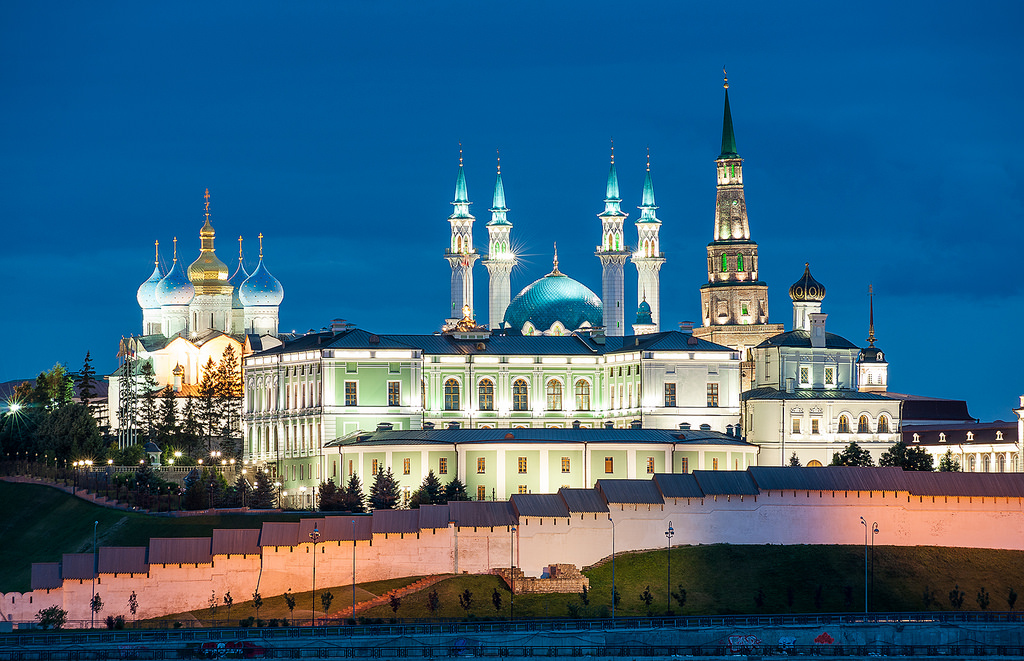
After the rebellion was finally suppressed, Kazan began its new history as part of the Russian state. In 1556, the construction of the new, white stoned Kremlin began. About 7,000 Russians were brought into the almost empty town. In the 17th century, Kazan grew economically and new manufacturing factories came into being. In 1708, it became the capital of large Kazan gubernia (province). From 1760s, the first wooden roads were built as well as bridges across the Bulak and the Kazanka rivers. By the end of the 18th century, about 22,000 people lived in Kazan, together with suburbs – over 40,000, and only about 10% of them were Tatars. The city became an educational and cultural center of the Volga region: in 1758, the first provincial gymnasium was opened in Kazan, in 1771 – the first madrasah, in 1791 – a theater. In 1804, the Kazan University was established – the third in Russia – and the city became a large scientific center.
7. Chelyabinsk (1,198,858)
Chelyabinsk is located on the border of the Urals and Siberia, and has an informal honorary title of “the Gateway to Siberia.” At the turn of the 19th-20th centuries, after the construction of the Trans-Siberian Railway, many travelers were buying postcards at the railway station of Chelyabinsk, and sent them throughout the world as evidence of their stay in Siberia. Chelyabinsk fortress was founded on the site of the Bashkir village Chelyaba in 1736. The official town status was obtained in 1787. In 1780s, Chelyabinsk was a quiet district town, but sometimes it was the place of events of global importance. For example, in 1788, a group of doctors headed by S.S. Andrievskiy studied symptoms and gave the name of anthrax, and invented a serum against this deadly disease.

By the mid-19th century, the town was one of the main trade fairs in the Urals. Until the late 19th century, Chelyabinsk was a relatively small town. The second birth happened in 1892, thanks to the Emperor Alexander III. It was related to the completion of construction of the Samara-Zlatoust railway that connected Chelyabinsk with the European part of the Russian Empire. The emperor canceled the project to build the railway Kazan – Yekaterinburg – Tyumen that didn’t include Chelyabinsk.
8. Omsk (1,178,391)
In 1716, a small wooden fort was constructed on the place of the present Omsk. Its only purpose was to protect the eastern borders of the Russian Empire along the Irtysh and the Ishim rivers. At the end of the 18th century, a brick fortress was built on the right bank of the Om River. Later, during the 19th century, the importance of Omsk as a military frontier diminished and the growth of the town was not significant. In the middle of the 19th century, the famous Russian writer F.M. Dostoevsky was exiled to Omsk. In 1890, with the construction of the Trans-Siberian Railway, the town began to grow quickly and received the official status of the capital of Western Siberia and Steppe (present Kazakhstan). In 1910, the Siberian Exposition of Agriculture and Industry was held in Omsk. After the exposition, Omsk received a nickname “Siberian Chicago”.
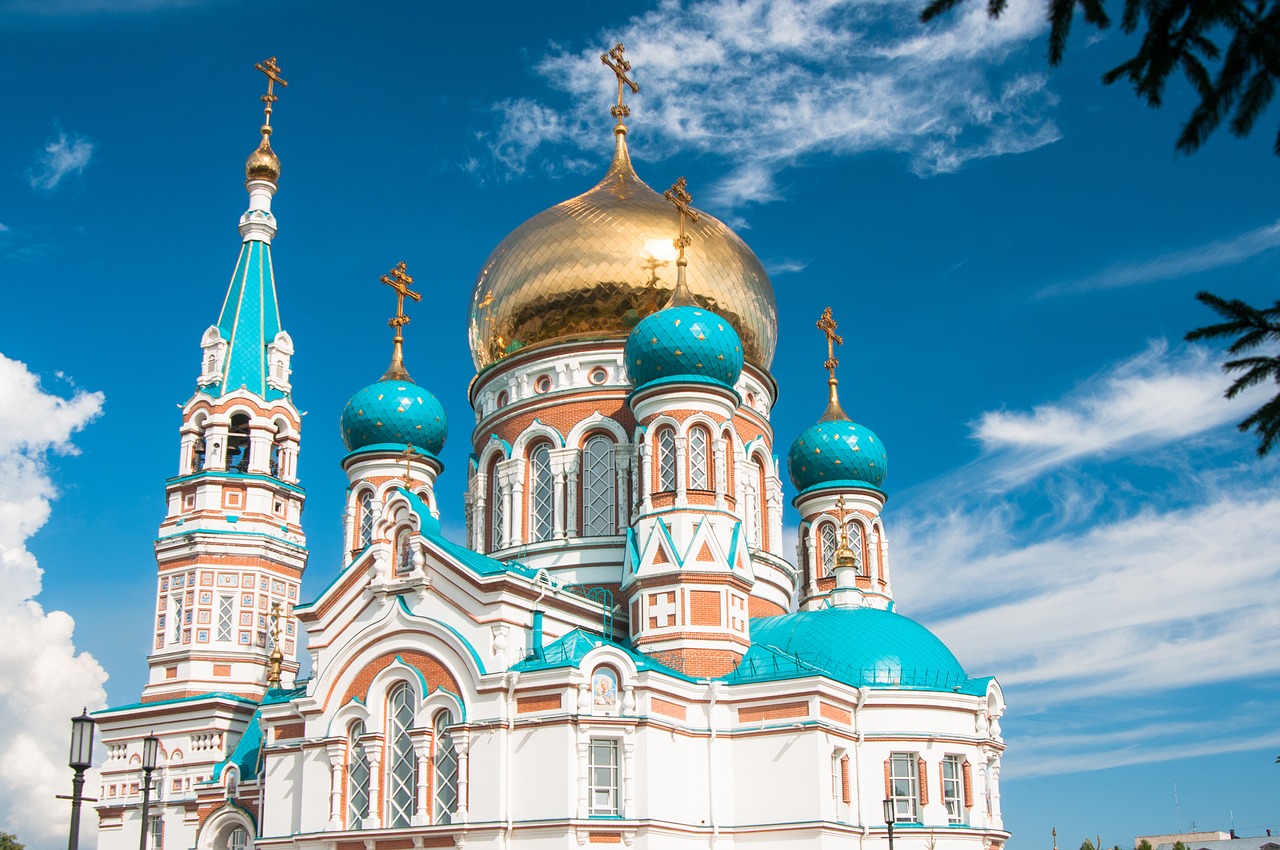
After the establishment of Soviet power, Novosibirsk was chosen to be the capital of Western Siberia. Omsk lost a lot of its administrative, educational and other functions. During and after the Second World War, the growth of the city continued, when several large industries were evacuated to Omsk from the western parts of the Soviet Union. After the war, Omsk was one of the most important military centers of the Soviet Union. Also, in 1950, the city became an oil refining center with the development of the Siberian natural gas and oil fields. Omsk was a “closed city”, no foreigner could visit it without a special permission. The high concentration of military enterprises led to a significant rise in unemployment after the collapse of the Soviet Union and a substantial reduction of the Russian military budget. Today, Omsk is open to visitors, there are no any restrictions on visiting it.
9. Samara (1,169,719)
The official foundation date of Samara is 1586. This year, a small fortress called Samara was built at the confluence of the Volga and Samara rivers. The main purpose of the fortress was to control the vast territory of the middle reaches of the Volga River and the mouth of the Samara River, to conduct the systematic conquest of the land, protect Russia from the nomads and to ensure the waterway from Kazan to Astrakhan. After construction of a quay, the town became an economic and diplomatic center of the country. In 1780, Samara became the capital of the Simbirsk region. In 1850, the population of the town was about 50 thousand people. By the end of the 19th century, the population reached 90 thousand people, and, by 1916, there were about 150 thousand people in Samara.
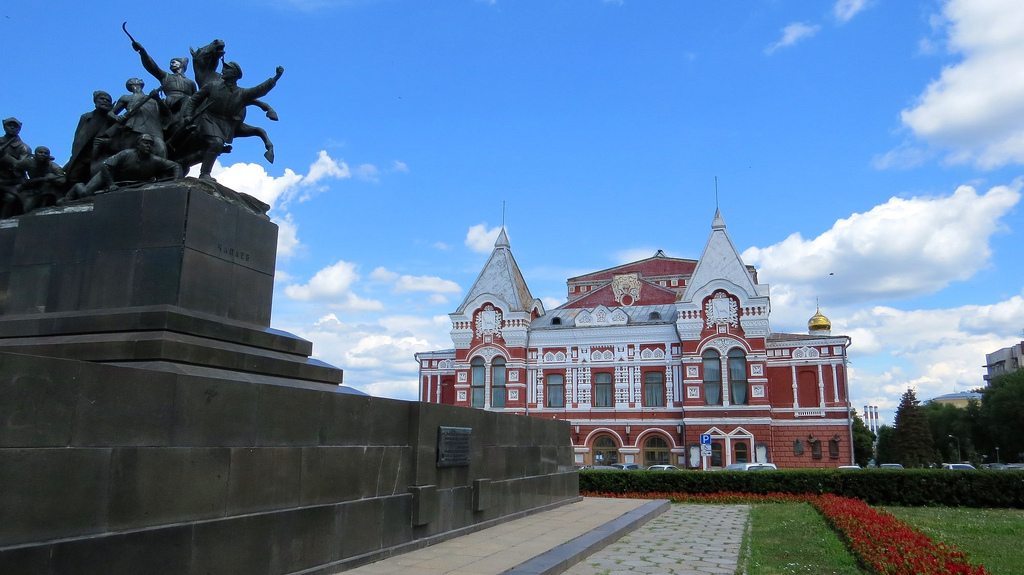
The local economy was growing quickly at the end of the 19th – the beginning of the 20th centuries (grain trading and flour milling industry). Samara province was on the first place in the Russian Empire in wheat production. Samara is a multi-faith city with a lot of Orthodox churches, monasteries, old believers’ churches, mosques, a synagogue, Catholic and Protestant churches. Samara is a major center of mechanical engineering and metalworking, food processing, as well as space and aviation industry producing outer space vehicles and machinery, aircraft, power stations, equipment for oil refineries, cranes, etc. It is among top ten Russian cities by industry volume. Samara food industry is known for its chocolate, vodka “Rodnik”, and “Zhiguli” beer.
10. Rostov-on-Don (1,125,299)
The region near the mouth of the Don River played an important commercial and cultural role since ancient times. Such settlements as Tanais (a Greek colony), Tana (a Genoese fort), Azak (a Turkish fortress) were situated in the region. The official date of foundation of Rostov-on-Don is considered to be December 15, 1749, when the Empress Elizaveta Petrovna signed a decree establishing Temernitskaya customs. The Don River connected the northern and southern regions of the Russian Empire. Temernitskiy port became the only Russian port in the south of the country providing trade with the countries of the Black, Aegean, and Mediterranean seas. In 1760-1761, for the protection of the lower reaches of the Don from the raids of the Turks and Crimean Tatars, construction of a fortress began. The garrison of the fortress consisted of more than four thousand people. The fortress was given the name of Metropolitan of Rostov and Yaroslavl Demetrius (1652-1709). Subsequently, the name was transformed: the fortress of Dimitri Rostov, Rostovskaya fortress, simply Rostov, and finally, to distinguish from the ancient town of Rostov the Great located near Yaroslavl, Rostov-on-Don.
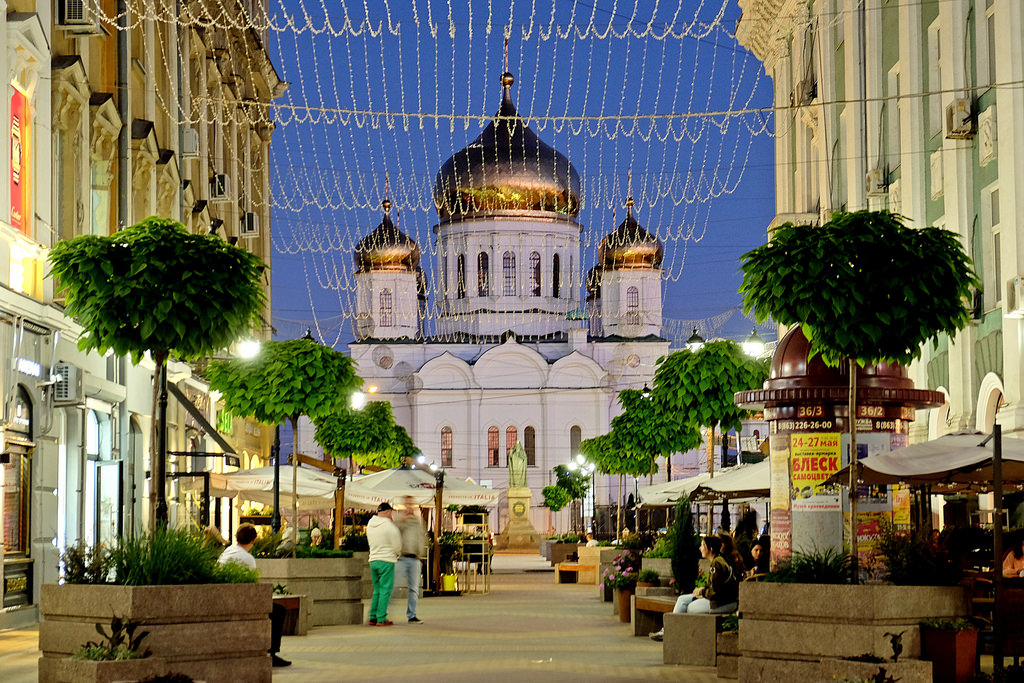
The fortress played a significant role during the Russian-Turkish wars of the second half of the 18th century. By the end of the 18th century, the fortress lost its strategic importance. The population of Rostov-on-Don was 119,476 people in 1897. In 1918-1920, during the Civil War, Rostov-on-Don played an important role as one of the centers of the White (anti-Bolshevik) movement. It was captured several times by the White Army and Red Army. In 1926, “Rostselmash”, the giant of the Soviet agricultural machinery, was founded. Rostov-on-Don became the capital of the region in 1928. The previous capital of the region was Novocherkassk (the capital of the Cossacks). Rostov-on-Don has a specific unique outlook because of its rich historical and cultural heritage. There are about 1,000 objects of cultural heritage in the city, including 482 architectural monuments (16 monuments of history and culture of federal importance), 70 archaeological monuments, 8 large memorial complexes, 106 monuments, and about 400 memorial plaques.
11. Ufa (1,115,560)
In 1557, the area inhabited by the Bashkirs became part of Grand Principality of Moscow. In 1574, on the orders of the Russian Tsar Ivan IV, a fortress was founded on the site of present Ufa. In 1586, the settlement became a town. The original name of the settlement was Tura-Tau, after the name of the hill it was standing on. The present name “Ufa” means “small” in the Turkic language; this name was used by local people. Later, it became the official name of the town. In the middle of the 17th century, the town got its emblem with an image of a running marten. At that time, the population of Ufa together with the garrison was about 1,500 people. In the 17th-18th centuries, Ufa gradually turned into an administrative and economic center of the region. In the 18th century, the town also became a large trading and cultural center of the Russian Empire.

In the middle of the 19th century, there were more than a dozen tanneries and other factories in Ufa. The town received further impetus to its development due to the following events. In 1870, the regular navigation was opened on the Belaya River. In 1888-1892, the Samara-Zlatoust (Kuibyshev) Railway was constructed. Rail and ship-repair workshops, sawmills, steam mills appeared in Ufa. By the end of the 19th century, there were about 30 factories in the town. In 1922, Ufa became the capital of Bashkir Autonomous Soviet Socialist Republic. In the 1920s-1930s, the city experienced rapid development, industrial production increased by several times. During the Second World War, dozens of industrial enterprises from the western regions of the USSR were evacuated to Ufa. After the discovery of oil in Bashkiria, this city became a large center of oil production and refining.
12. Krasnoyarsk (1,082,933)
Krasnoyarsk was founded by the Cossacks headed by Andrey Dubensky in 1628 as a military settlement in the place of the confluence of the Kacha and Yenisei rivers. Originally the settlement was called “Krasny Yar”. Krasnoyarsk became a town in 1690, when Siberia was finally annexed to Russia. In 1708, the town population was about 800 people. In 1713, the population reached 2500 people. It began to grow rapidly after the Siberian Road was constructed in 1735. The road connected Krasnoyarsk with Achinsk and the rest of European Russia. In 1773, after a major fire, only thirty houses remained in Krasnoyarsk. The new linear layout of the town of St. Petersburg type was developed. This was the beginning of present Krasnoyarsk. The town served as one of the places of exile. Eight Decembrists were exiled to Krasnoyarsk after the uprising was suppressed.

In 1834, the town garden was founded. Today, it is the central park of the city. Further development of Krasnoyarsk was due to gold-fields found in the region, and the railway constructed in 1895. In Soviet times, Krasnoyarsk was one of the largest cities in Siberia and the Russian Soviet Federative Socialist Republic. In 1934, Krasnoyarsk became the administrative center of the Krasnoyarsk Krai. The first in the RSFSR children’s railway was opened in the Park of Culture and Rest named after Gorky in 1936. During World War II, a lot of plants were evacuated from European Russia to Krasnoyarsk.
13. Perm (1,048,005)
Perm stands on the banks of the Kama River, the largest left tributary of the Volga, to the south of the mouth of the Chusovaya River. It is the third most extensive city in Russia after Moscow and Sochi and the third after St. Petersburg and Moscow by the area it occupies. Perm stretches about 70 km along the Kama. According to the Russian linguist and academician D.V.Bubrih’s version, the word “perm” derives from a Vepsian word “perama” meaning “far-away land”. Permian geological period (often simply “Perm”) is named in honor of the Perm province. In 1841, the British geologist Roderick Murchison allocated this geological period when he was on an expedition in the Kungur district of the Perm province. The territory of the present city was inhabited since ancient times. There are more than 130 archaeological sites in Perm (from Stone Age to the late Middle Ages). In the 17th century, these lands belonged to the Stroganov merchants.
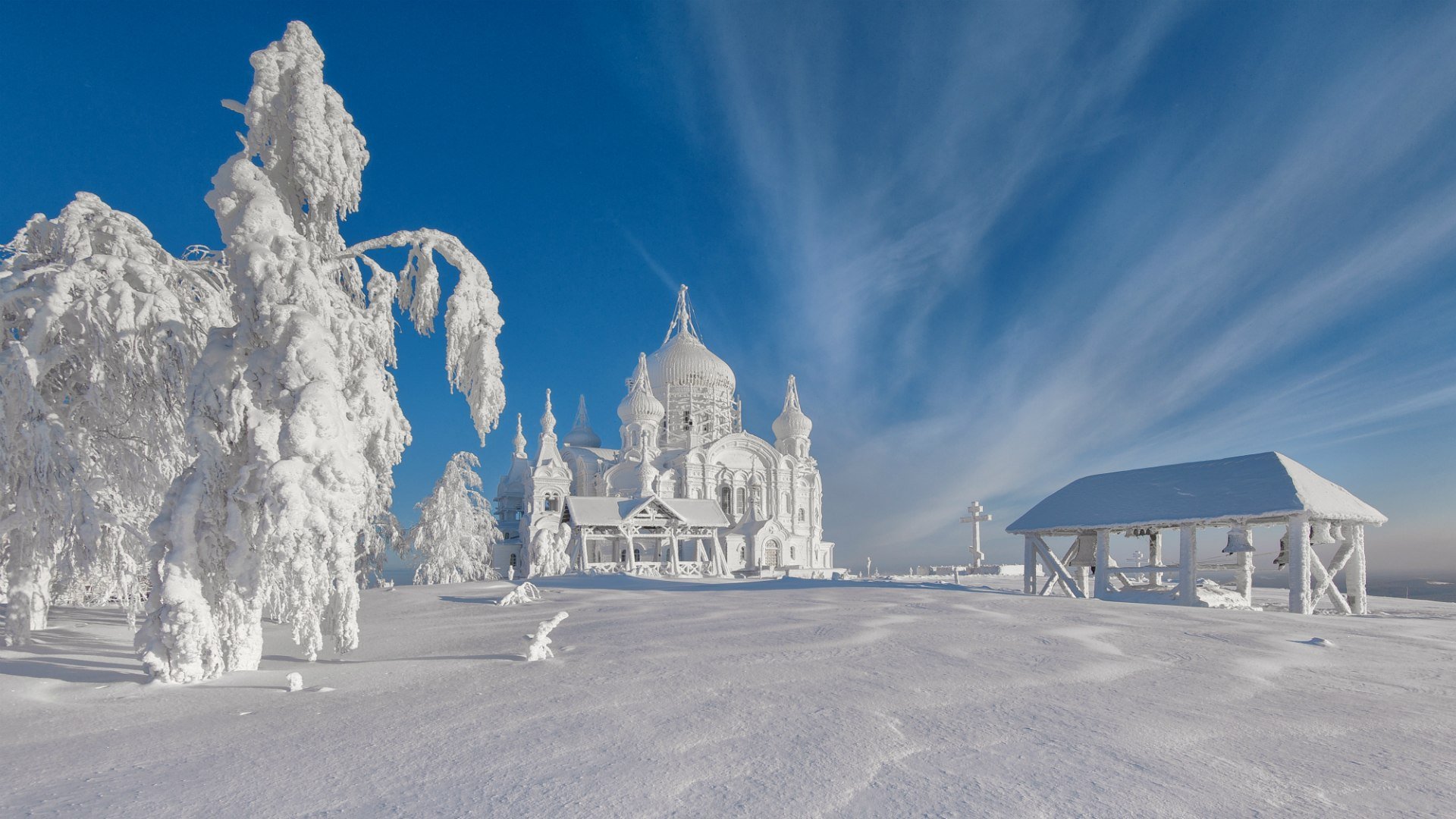
The date of Perm foundation is considered the day when construction of Yegoshinsky copper melting plant began – May 4, 1723. In 1780, Catherine II issued a decree about the foundation of the town of Perm on the basis of the plant. In 1780-1781, the buildings for official institutions were being constructed, construction of Kazansky and Sibirsky roads began. On August 24, 1878, the Ural Railway from Perm to Chusovaya was opened. The end of the 19th century was a period of intensive railway construction. At the end of the 19th century, institutions of arts and culture were intensely developed in Perm. In 1874, construction of an opera and ballet theater began. In 1886, the first movie theater “Illusion” was opened. In the early 20th century, the city’s population reached 100,000 people.
14. Voronezh (1,039,801)
In 1585, a wooden fort was founded on the banks of the Voronezh River by order of the Russian Tsar Fyodor I Ivanovich (Ivan the Terrible’s son). The main purpose of the new settlement was to protect the southern border of the country from the raids of Crimean Tatars and other nomads. Construction of the fort was completed in 1586. Therefore, 1586 is considered the founding date of Voronezh. The fort was located on a high and steep right bank of the Voronezh River. In 1590, it was burned down during one of the raids. In 1594, Voronezh was rebuilt on almost the same place. In the winter of 1696, after the failure of the first attempt of capture the town of Azov, Peter I decided to create a Russian Navy and chose Voronezh as the place of its construction. In 1696-1722, Peter I visited Voronezh more than a dozen times and spent a total of about 500 days in the town. During the stay of Peter I, Voronezh actually turned into an administrative center of Russia. The population of the town increased from 10 to 50 thousand people.
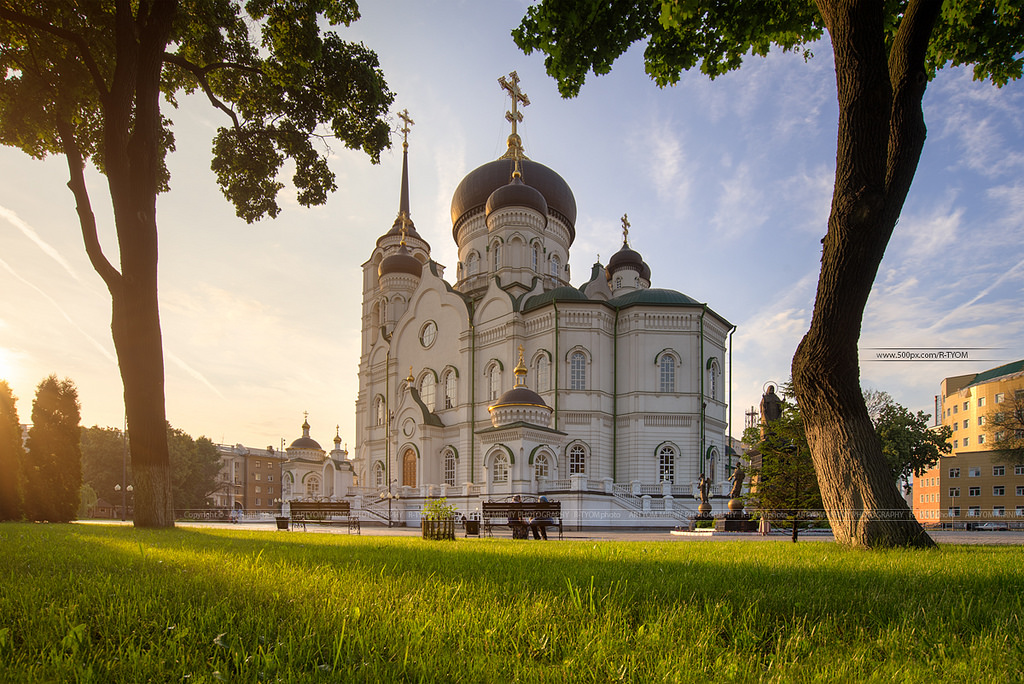
Voronezh became the capital of the Azov province in 1715. Later, in 1725, the Azov province was renamed into the Voronezh guberniya. In 1748, Voronezh was badly damaged by fire. After it, the center of the town moved to the place of the present University Square. In 1781, the town received its coat of arms. In the 19th century, Voronezh was the center of the Central Black Earth region.The main local products were bread, butter, cattle, leather, soap and others. It was connected with Rostov-on-Don by railway in 1868, with Moscow – in 1871. In 1913, Voronezh Agricultural Institute, the first higher education institution in the city, was opened. Today, it is known as Voronezh State Agricultural University named after Emperor Peter I. In the early 20th century, the city’s population was about 61 thousand people.
15. Volgograd (1,015,586)
The first settlement on the territory of present Volgograd was founded presumably in 1555. In 1589, it was first mentioned in the historical materials as a small fort called Tsaritsyn, standing on an island at the confluence of the Tsaritsa and the Volga rivers. The fort was named after the Tsaritsa River. At the beginning of the 17th century, Tsaritsyn burned down and was newly rebuilt on the right bank of the Volga in 1615. The fortress was an important part of the Russian southern defense line. The reforms of Peter I greatly increased the country’s power (organization of the army, industry and government). In the 1750s, the Russian expansion to the Crimea, the Caucasus and Central Asia started. Tsaritsyn was located far from these regions and therefore began to turn in a small peaceful provincial town. In the 19th century, it became a large river port and trade center.

After the abolition of serfdom in 1861, the rapid growth of the town’s industry began, aided by convenient transport routes – the Volga River and developed railway network. In 1880, an oil refinery of “Nobel” company came into operation, Russia’s largest oil storage facilities were built here. At the beginning of the 20th century, there were more than 230 factories in Tsaritsyn. In 1913, the population of the town was about 130,000. In 1918-1920, during the Civil War in Russia, Tsaritsyn became a place of fierce fighting. In 1925, the city was renamed in honor of Stalin. Stalingrad became one of the centers of the Soviet heavy industry. During the the Second World War, the Battle of Stalingrad took place here. It was one of the turning points of the war, one of the biggest battles in history.
